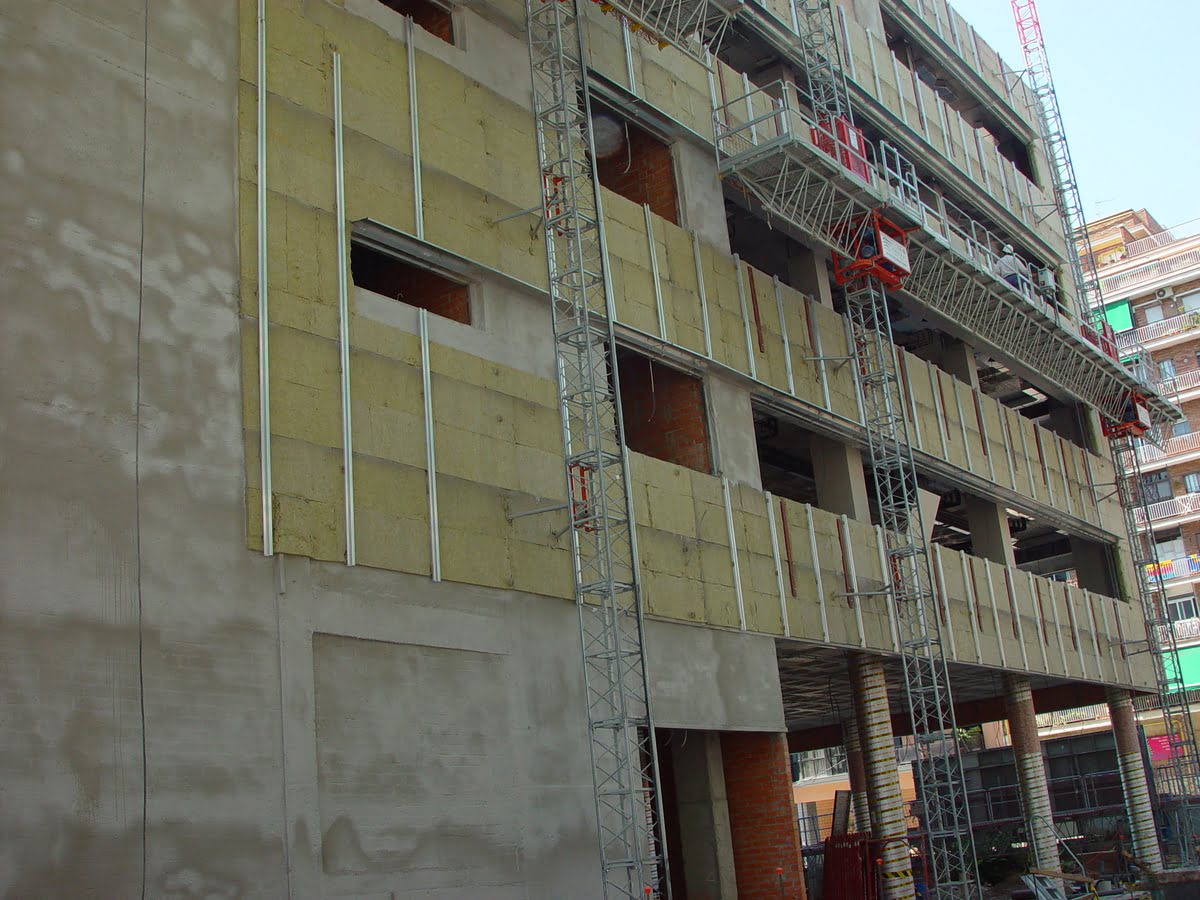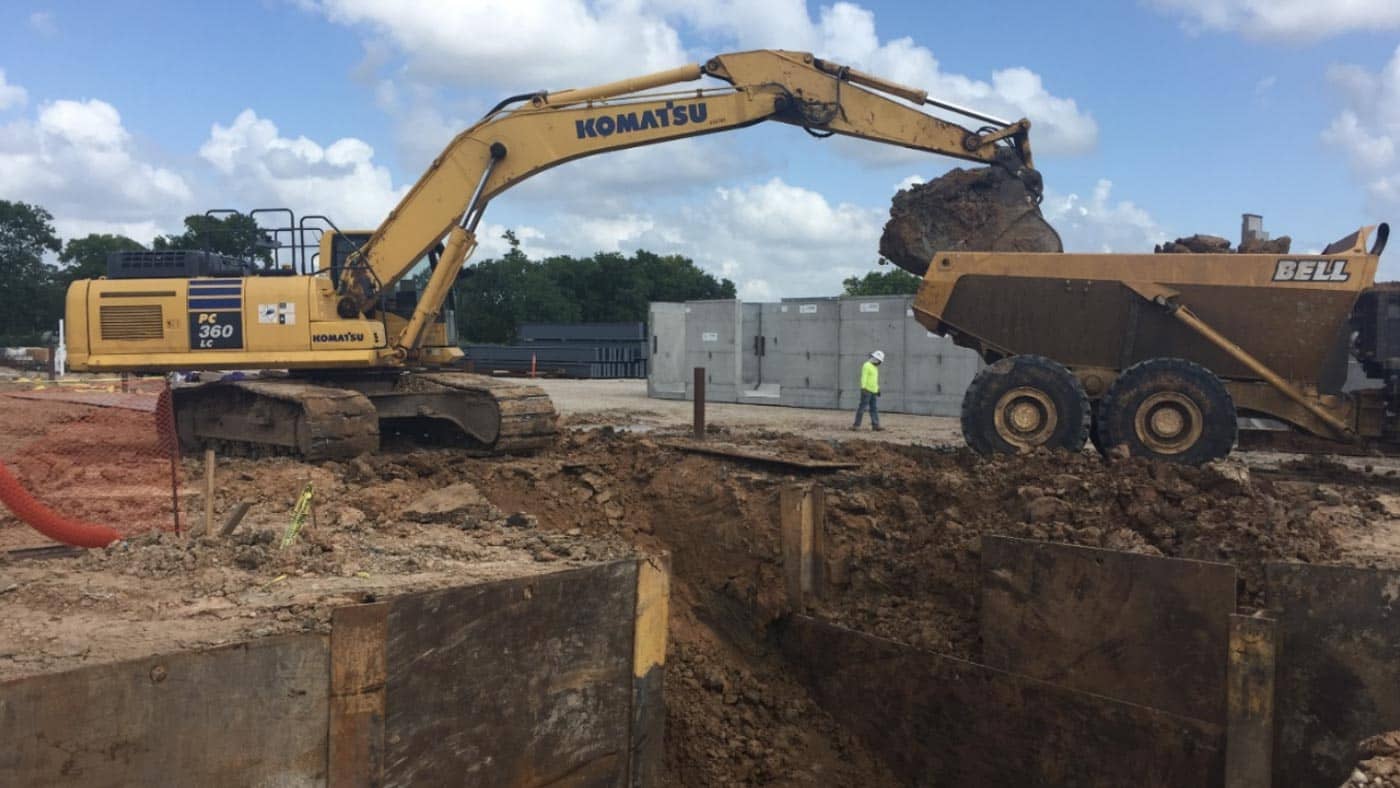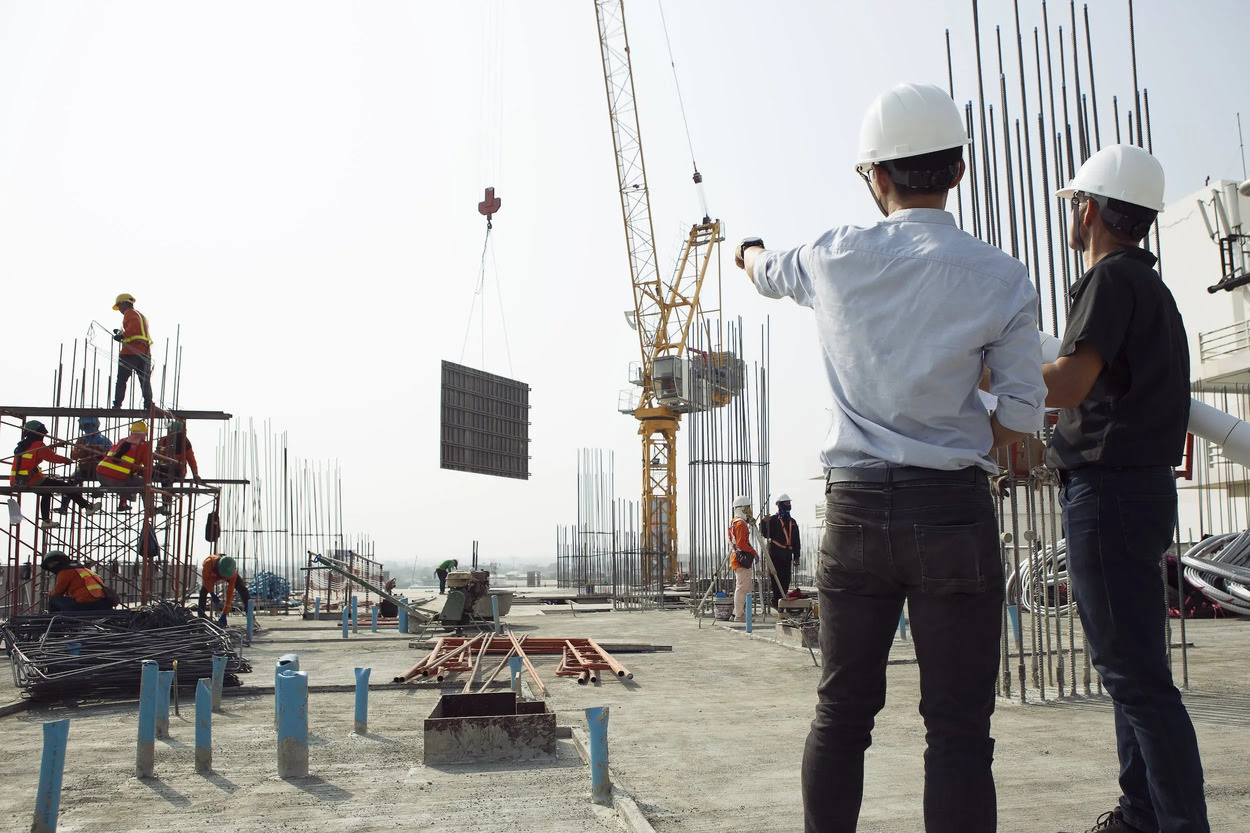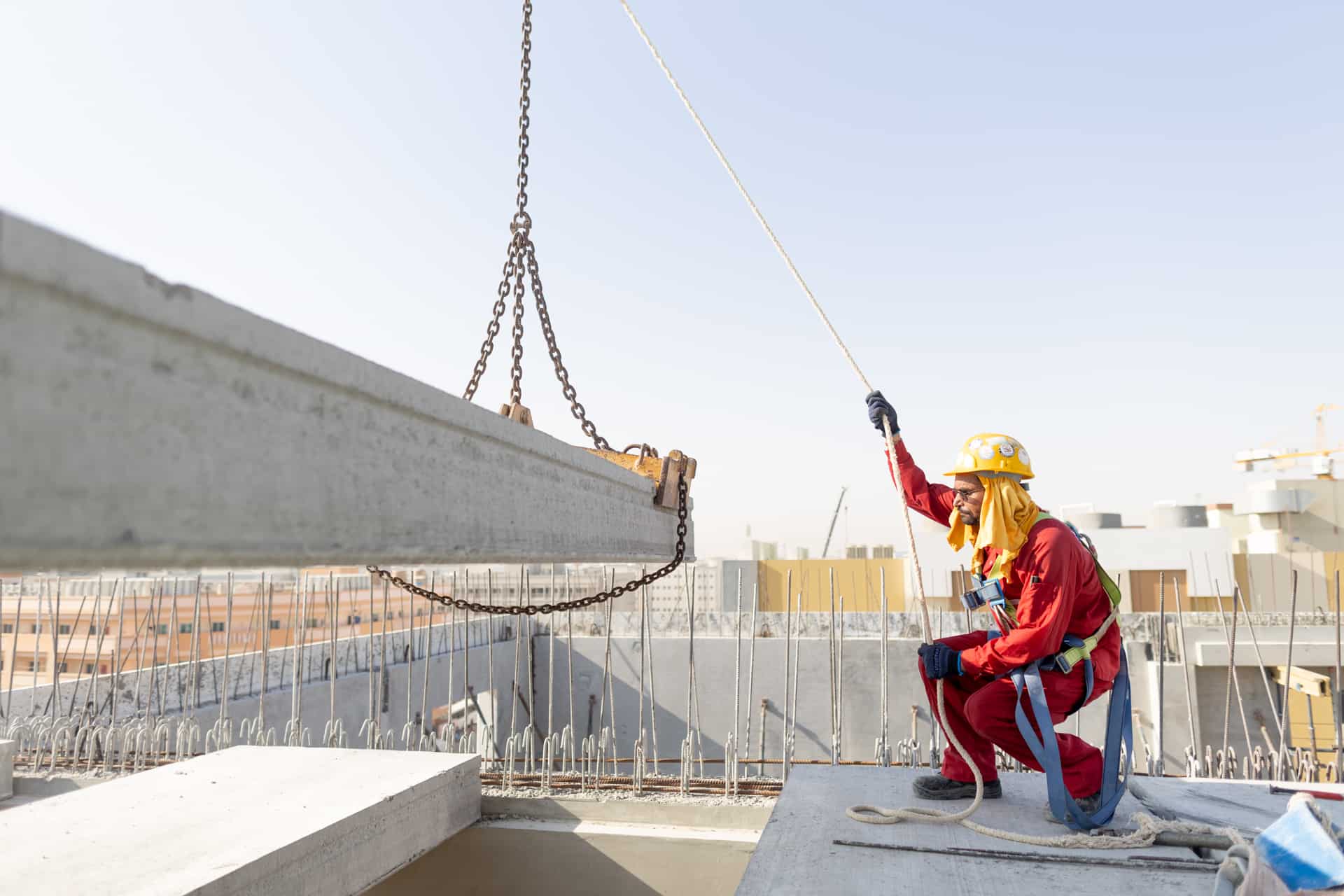Home>diy>Building & Construction>What Is The Meaning Of RFI In Construction


Building & Construction
What Is The Meaning Of RFI In Construction
Modified: January 9, 2024
Discover the significance of RFI in building construction and how it impacts project management. Gain insights into its role and importance in the industry.
(Many of the links in this article redirect to a specific reviewed product. Your purchase of these products through affiliate links helps to generate commission for Storables.com, at no extra cost. Learn more)
Introduction
Welcome to the world of construction, where every project involves a complex web of communication and coordination. Whether you’re an architect, engineer, contractor, or sub-contractor, you know just how important it is to have clear and effective communication throughout the construction process. One key aspect of this communication is the use of RFIs, or Requests for Information. So, what exactly is the meaning of RFI in construction, and what role does it play in the building process?
In simple terms, RFIs are formal written inquiries made by one party to another in a construction project, seeking clarification, information, or resolution on a specific aspect of the project. RFIs help ensure that everyone involved is on the same page and can make informed decisions that impact the progress and success of the construction project.
RFIs act as a vital tool for communication and documentation in the construction industry. They enable stakeholders to seek clarification, highlight concerns, and address potential issues that may arise during the construction process. By employing RFIs, project teams can ensure that any uncertainties or discrepancies are resolved promptly, minimizing the risk of errors, delays, and budget overruns.
The RFI process begins with one party submitting a formal RFI to the party responsible for addressing the inquiry. The party receiving the RFI then reviews the request, gathers the necessary information, and provides a comprehensive response. The RFI process is crucial in maintaining transparency, accountability, and collaboration among the various parties involved in a construction project.
Throughout this article, we will delve into the world of RFIs in construction, exploring their purpose, the RFI process, and the importance of effective RFI communication. We will also discuss common challenges in RFI management and provide best practices for submitting and responding to RFIs. So, let’s dive in and uncover the significance of RFIs in the construction industry!
Key Takeaways:
- RFIs, or Requests for Information, are essential in construction projects, serving purposes such as seeking clarification, resolving conflicts, and documenting communications. They contribute to efficient project management and risk mitigation.
- Effective RFI communication offers benefits including improved decision-making, collaboration, and transparency. By following best practices for submitting and responding to RFIs, project stakeholders can enhance the overall RFI process and ensure project success.
Definition of RFI in Construction
Before we delve deeper into the world of RFIs in construction, let’s start by understanding what exactly an RFI is and how it is used in the industry.
In the construction context, RFI stands for Request for Information. An RFI is a formal written inquiry that is used to seek clarification, request additional information, or address concerns or issues related to a specific aspect of a construction project. RFIs are typically submitted by one party, such as the contractor or architect, to another party, such as the project owner or engineer.
RFIs are an essential part of the communication and documentation process in construction projects. They help facilitate clear and effective communication between project stakeholders and ensure that everyone involved has a shared understanding of project requirements, specifications, and any potential challenges or uncertainties.
The information sought through an RFI can vary widely, depending on the specific project and the nature of the inquiry. It may include requests for clarification on project drawings, specifications, or contractual requirements. RFIs may also be used to address conflicts or discrepancies that arise during the construction process or to request changes or modifications to the project scope.
When submitting an RFI, it is crucial to provide as much detail as possible to ensure that the recipient fully understands the nature of the inquiry and can provide an accurate and timely response. This may include referencing specific project documents, providing relevant drawings or specifications, and clearly outlining the issue or question at hand.
Similarly, when responding to an RFI, the recipient should provide a comprehensive and detailed response that addresses all aspects of the inquiry. This ensures that the requesting party receives the information and clarity needed to proceed with the project effectively.
It is important to note that RFIs are not contractual claims or change orders. They are simply a means of communication and seeking clarification in order to avoid potential issues or conflicts and maintain the smooth progress of the construction project.
Now that we have a better understanding of what an RFI is in the context of construction, let’s explore the purpose and significance of RFIs in construction projects.
Purpose of RFIs
RFIs play a critical role in the construction industry, serving multiple purposes that contribute to the successful completion of a construction project. Let’s explore the key purposes of RFIs:
- Clarification: One of the main purposes of RFIs is to seek clarification on project requirements, specifications, or any other aspects that may be unclear. Construction projects involve numerous documents, drawings, and instructions, and it is essential to have a clear understanding of these elements. RFIs enable project stakeholders to ask questions, request explanations, and ensure that there is no ambiguity in project details.
- Conflict Resolution: Construction projects often involve different parties working together, including architects, engineers, contractors, subcontractors, and suppliers. With multiple stakeholders involved, conflicts and discrepancies can arise. RFIs provide a formal process by which these conflicts can be identified, addressed, and resolved. By bringing issues to light and seeking a resolution through RFIs, project teams can avoid potential disputes that can lead to delays, cost overruns, or legal issues.
- Coordination: Construction projects are complex endeavors that require coordination among different disciplines and trades. RFIs play a crucial role in facilitating this coordination by allowing various parties to communicate and align their efforts. Through RFIs, project stakeholders can share information about schedules, sequencing, materials, and other project-related matters, ensuring that everyone is working towards a common goal.
- Documentation: The RFI process also serves as an important documentation tool in construction projects. Each RFI, along with its response, creates a traceable record of the communication and decision-making process. This documentation is valuable for future reference, auditing, and legal purposes. It helps establish a clear timeline of events, supports accountability, and provides a reference point for any potential claims or disputes that may arise.
By serving these purposes, RFIs contribute to efficient project management, improved communication, enhanced productivity, and ultimately, the successful completion of construction projects. They enable stakeholders to identify and address issues early on, reducing the risk of errors, rework, delays, and cost overruns.
Now that we understand the purpose of RFIs, let’s take a closer look at the RFI process in construction.
RFI Process in Construction
The RFI process in construction is a well-defined and structured procedure that enables effective communication and information flow between project stakeholders. Let’s break down the key steps involved in the RFI process:
- Identifying the Need: The RFI process begins when a project stakeholder identifies the need for additional information, clarification, or resolution on a specific aspect of the project. This could be due to ambiguous project documents, conflicting information, or potential challenges that require further clarification.
- Drafting and Submitting the RFI: Once the need for an RFI is identified, the requesting party drafts a formal written request, outlining the specific inquiry or concern. The RFI should be clear, concise, and provide sufficient details to enable the recipient to understand the nature of the inquiry. The RFI is then submitted to the appropriate party responsible for addressing the request, such as the project owner, architect, or engineer.
- Reviewing and Assessing the RFI: Upon receiving the RFI, the recipient reviews and assesses the request. This involves analyzing the inquiry, understanding the underlying issue, and determining the necessary information or action required to address the concern effectively. During this stage, the recipient may also consult with other project stakeholders to gather additional input or expertise.
- Gathering Information: Once the RFI is assessed, the recipient begins the process of gathering the necessary information to provide a comprehensive response. This may involve reviewing project documents, conducting research, consulting with subject matter experts, or seeking guidance from relevant parties.
- Providing a Response: Once all the required information is gathered, the recipient formulates a detailed and clear response to the RFI. The response should address all aspects of the inquiry, provide the necessary clarification or information sought, and offer potential solutions or recommendations, if applicable.
- Communication and Resolution: The response to the RFI is then communicated back to the requesting party. This could be in the form of a written document, a meeting, or any other agreed-upon method of communication. If the response resolves the concern or addresses the inquiry satisfactorily, the RFI is considered closed. However, if further clarification or action is needed, the RFI may lead to additional discussions or follow-up RFIs.
- Documentation and Tracking: Throughout the RFI process, it is crucial to maintain thorough documentation. This includes recording the date of the RFI, the parties involved, the details of the inquiry, and the response provided. This documentation helps create a traceable record of the communication and decision-making process, providing transparency and accountability.
By following a structured RFI process, construction projects can ensure that communication is clear, issues are addressed promptly, and project requirements are met effectively. Now, let’s explore the importance of RFIs in construction projects.
Importance of RFIs in Construction Projects
RFIs serve as a critical communication tool in construction projects, playing a vital role in ensuring project success. Let’s explore the key reasons why RFIs are important:
- Clarity and Understanding: Construction projects involve numerous technical documents, drawings, and specifications. RFIs provide an opportunity to seek clarification and ensure that all stakeholders have a clear understanding of project requirements. By addressing potential uncertainties, RFIs prevent misunderstandings and minimize the risk of errors or rework.
- Risk Mitigation: RFIs help identify and mitigate risks early in the construction process. By highlighting potential conflicts or issues, RFIs allow project teams to address them proactively, minimizing the likelihood of costly delays, disputes, or rework.
- Coordination and Collaboration: Construction projects involve multiple parties working together, including architects, engineers, contractors, and subcontractors. RFIs facilitate collaboration and coordination by providing a formal mechanism for communication and information exchange. This ensures that all stakeholders are aligned, promoting seamless workflow and reducing the likelihood of miscommunication or conflicting actions.
- Change Management: As construction projects progress, changes may be required due to unforeseen circumstances, design modifications, or stakeholder requests. RFIs enable project teams to manage changes effectively by documenting and addressing the need for change requests. This helps maintain project integrity and ensures that modifications are implemented in a controlled and informed manner.
- Resolution of Issues: Construction projects can encounter various issues or conflicts, such as design discrepancies, material availability, or unexpected site conditions. RFIs provide a mechanism for stakeholders to raise concerns and seek resolutions. By addressing issues promptly through the RFI process, project teams can minimize the impact on the project schedule and budget.
- Documentation and Accountability: RFIs create a documented trail of communication and decision-making in construction projects. This documentation is crucial for maintaining accountability, providing evidence in case of disputes or claims, and establishing a transparent record of project-related discussions and resolutions.
Overall, RFIs are essential for effective project management, efficient communication, and successful project outcomes. They help minimize risks, enhance collaboration, and ensure that everyone involved is working towards a shared understanding of project requirements and goals.
However, managing RFIs in construction projects can present its own set of challenges. Let’s explore some common challenges and discuss strategies for effective RFI management in the next section.
Read more: What Does Masonry Construction Mean
Common Challenges in RFI Management
While RFIs are crucial for effective communication and documentation in construction projects, their management can present several challenges. Understanding and addressing these challenges is essential for streamlining the RFI process. Let’s explore some common challenges in RFI management:
- Volume and Timing: Construction projects generate numerous RFIs, especially in the early stages when project requirements are being finalized. Managing a high volume of RFIs within tight timelines can be overwhelming. It is important to establish efficient processes and allocate resources to handle RFIs promptly and effectively.
- Communication and Collaboration: RFIs require clear and effective communication between multiple project stakeholders. However, miscommunication, delays in response, or lack of collaboration can hinder the RFI process. Establishing clear lines of communication, setting expectations, and ensuring timely responses are essential for smooth RFI management.
- Coordination and Tracking: With multiple RFIs being submitted and responded to, it can be challenging to keep track of the status and progress of each RFI. Lack of coordination and tracking can lead to overlooked or delayed RFIs. Implementing a robust tracking system, assigning responsibilities, and regularly reviewing the status of RFIs can help prevent such issues.
- Disagreements and Disputes: RFIs may sometimes lead to disagreements or disputes between project stakeholders. Conflicting opinions, differing interpretations, or disagreements over cost implications can arise. Resolving such issues in a timely and amicable manner is crucial to prevent delays and maintain project harmony.
- Documentation and Record-keeping: Accurate documentation of RFIs and their responses is vital for future reference, auditing, and legal purposes. However, inadequate documentation or poor record-keeping practices can create confusion and challenges in tracking and referencing RFIs. Developing a standardized documentation process and utilizing project management software can help streamline record-keeping.
- Timely Resolution: Delayed or unresolved RFIs can disrupt project progress, impact scheduling, and lead to cost overruns. It is essential to establish realistic response timelines and ensure that RFIs are addressed in a timely manner to maintain project momentum.
Addressing these challenges requires effective collaboration, clear communication, and efficient processes. By implementing best practices for RFI management, construction projects can overcome these obstacles and ensure a streamlined and successful RFI process. Next, let’s explore the benefits of effective RFI communication in construction projects.
RFI in construction stands for Request for Information. It is a formal process used to obtain clarification or additional information about a particular aspect of a construction project. When submitting an RFI, be clear and specific about the information you need to avoid delays in the project.
Benefits of Effective RFI Communication
Effective RFI communication is crucial for the success of construction projects. It facilitates clear and timely information exchange, promotes collaboration, and minimizes the risk of errors and delays. Let’s explore the key benefits of effective RFI communication:
- Clarity and Understanding: Effective RFI communication ensures that project stakeholders have a clear understanding of project requirements, specifications, and any potential challenges. Clarity helps avoid misunderstandings and minimizes the risk of errors or rework due to misinterpretation.
- Improved Decision-Making: RFIs enable project stakeholders to make informed decisions based on the information and clarification provided. By facilitating effective communication, RFIs help stakeholders assess options, evaluate potential impacts, and make decisions that align with project goals and requirements.
- Risk Mitigation: Clear and timely communication through RFIs helps identify and address risks early on in the construction process. By bringing potential issues to light, stakeholders can take proactive measures to mitigate risks, reducing the likelihood of delays, disputes, or costly rework.
- Effective Collaboration: RFIs foster collaboration among different project stakeholders, including architects, engineers, contractors, and suppliers. Open communication channels allow stakeholders to exchange valuable insights, share expertise, and collectively work towards resolving issues and meeting project objectives.
- Change Management: Construction projects often require adjustments or modifications due to evolving project needs or unexpected circumstances. Effective RFI communication helps manage changes by documenting and addressing change requests in a structured and informed manner, ensuring that any modifications do not disrupt project progress.
- Transparency and Accountability: RFIs create a documented record of communication and decision-making throughout the construction process. This documentation promotes transparency, establishes accountability, and helps resolve disputes or claims that may arise during or after the project.
- Efficiency and Productivity: By streamlining communication and providing timely responses, effective RFI communication improves overall project efficiency and productivity. It minimizes delays caused by unanswered inquiries or misunderstandings, keeping the construction schedule on track and optimizing resource utilization.
By embracing effective RFI communication, construction projects can enhance collaboration, reduce risks, and achieve successful project outcomes. Now, let’s explore some best practices for submitting and responding to RFIs in the next section.
Best Practices for Submitting and Responding to RFIs
Submitting and responding to RFIs effectively is essential for ensuring clear communication and timely resolution of inquiries in construction projects. By following best practices, stakeholders can streamline the RFI process and enhance project efficiency. Let’s explore some key best practices for submitting and responding to RFIs:
Submitting RFIs:
- Provide Sufficient Information: When submitting an RFI, provide clear and detailed information regarding the issue or question. Include relevant project documents, drawings, or specifications to provide necessary context, ensuring the recipient fully understands the inquiry.
- Be Clear and Concise: Clearly articulate the inquiry or concern in a concise manner. Use precise language, avoid jargon, and ensure that the message is easy to understand.
- Reference Relevant Documents: If the RFI is related to specific project documents, drawings, or contractual requirements, reference them explicitly. This helps the recipient quickly locate the relevant information.
- Provide Supporting Visuals: If applicable, include supporting visuals such as annotated drawings or photographs to aid in understanding the issue or question more effectively.
- Ensure Timely Submission: Submit RFIs in a timely manner, allowing sufficient time for the recipient to review and provide a response before critical project milestones or deadlines.
- Use a Standardized Format: Follow a standardized format for submitting RFIs, including a header with essential project information, a clear description of the issue or question, and any supporting materials or references.
Read more: What Does Turnkey Mean In Construction
Responding to RFIs:
- Understand the Inquiry: Take the time to thoroughly understand the inquiry before formulating a response. Seek additional information or clarification, if needed, to ensure a comprehensive and accurate response.
- Be Timely and Responsive: Respond to RFIs within the agreed timeframe or as soon as possible. Prompt responses demonstrate commitment to effective communication and project progress.
- Provide Comprehensive Responses: Address all aspects of the inquiry in a detailed and comprehensive manner. Provide clear explanations, supporting information, and potential solutions or recommendations, if applicable.
- Ensure Clarity and Accuracy: Use clear and concise language in your response to avoid confusion. Double-check your response for accuracy and ensure that it directly addresses the issue or question posed in the RFI.
- Collaborate and Seek Input: If necessary, collaborate with other project stakeholders or subject matter experts to provide a more comprehensive and accurate response to the RFI.
- Document and Track: Maintain proper documentation of the response, including the date, stakeholders involved, and any decisions or actions taken. Use a tracking system to ensure that no RFIs go unanswered or unresolved.
By following these best practices, construction project stakeholders can establish a smooth and efficient RFI process, fostering clear communication and timely resolution of inquiries. Now, let’s wrap up our discussion.
Conclusion
RFIs, or Requests for Information, are a crucial aspect of communication and documentation in the construction industry. They play a vital role in project management by facilitating clear and effective communication, resolving conflicts, and ensuring project requirements are met. Throughout this article, we explored the meaning of RFIs in construction, their purpose, and the process involved in managing RFIs.
RFIs serve several purposes, including seeking clarification, resolving conflicts, coordinating efforts, and documenting project communications. By addressing these purposes, RFIs contribute to efficient project management, improved decision-making, and risk mitigation in construction projects.
However, managing RFIs can present challenges, such as handling a high volume of RFIs, effective communication and collaboration, tracking RFIs, and resolving disagreements. By recognizing and addressing these challenges, project stakeholders can streamline the RFI process and maximize its effectiveness.
Effective RFI communication offers numerous benefits, including clarity and understanding, improved decision-making, collaboration, change management, transparency, and increased efficiency. By embracing best practices for submitting and responding to RFIs, such as providing sufficient information, clear and concise communication, and timely responses, project stakeholders can enhance the overall RFI process and ensure project success.
In conclusion, RFIs are an invaluable tool in the construction industry, enabling effective communication, problem-solving, and project coordination. By utilizing RFIs in a proactive and efficient manner, construction projects can overcome challenges, promote collaboration, and achieve desired project outcomes.
Remember, clear and timely communication is the foundation of successful construction projects, and RFIs are a key component of that communication. So, embrace the RFI process and make the most out of this valuable tool in the construction industry.
Frequently Asked Questions about What Is The Meaning Of RFI In Construction
Was this page helpful?
At Storables.com, we guarantee accurate and reliable information. Our content, validated by Expert Board Contributors, is crafted following stringent Editorial Policies. We're committed to providing you with well-researched, expert-backed insights for all your informational needs.














0 thoughts on “What Is The Meaning Of RFI In Construction”